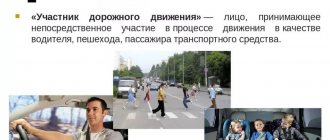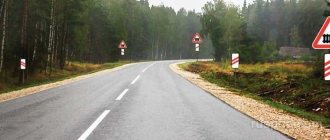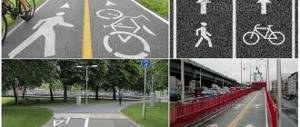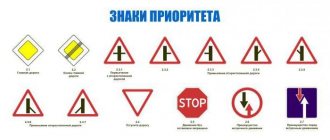And again - the human factor
Experience and research show that in the vast majority of cases, the cause of road accidents is the human factor, or more precisely, driver error.
First, driving under the influence of alcohol or drugs. This is one of the leading causes of fatal road accidents. All drivers know that alcohol dulls attention and it is better not to drive in this state, but some continue to stubbornly ignore this rule.
Second, speeding is the next most common cause of traffic fatalities. Numerous studies have confirmed that the likelihood of getting into an accident increases if the car is moving faster or slower than the average speed of traffic. It has also been noticed that when driving fast, the driver gets used to this pace of movement and is not able to adequately assess the rapidly changing situation on the road. As a result, severe accidents occur with the most tragic consequences.
Thirdly, driver fatigue. In sleepy or tired people, attention is dulled and reaction time increases. The behavior of such drivers is almost as unpredictable as that of drunk drivers. Traffic accidents involving drivers who fell asleep at the wheel quite often appear in the reports of the State Traffic Inspectorate.
Fourthly, drivers are sometimes simply distracted from the road. The reason may be a conversation on a mobile phone or typing a message in the messenger. Meanwhile, even a few seconds of distraction from the situation on the road, for example, by switching the car radio, can lead to an accident.
Fifthly, many people underestimate weather and road conditions. On a wet or snowy road, the usual speed can cause skidding, and the braking distance lengthens. An untimely change of tires from summer to winter is also fraught with danger.
The most important thing is to convince road users that they are not alone on the road and both their own lives and the lives of the people who surround them depend on their behavior
Plus, the number of deaths and injuries on the roads significantly increases when passive safety rules are ignored. The effectiveness of seat belts has long been proven; they are comfortable and do not interfere with either drivers or passengers. However, many do not use them, considering it inconvenient or pointless. At the same time, an unbelted passenger in both the front and rear seats endangers not only himself, but also those sitting in the adjacent seats. Statistics say that the use of seat belts reduces the risk of death and serious injury in a frontal collision by 2-2.5 times, in a side collision by 1.8 times, and in a rollover by 5 times.
Statistics also clearly indicate the need to use child restraints when transporting children. Over the eight months of this year, 242 children were killed and 7,360 were injured of varying degrees of severity in 6,243 road accidents involving child passengers on Russian roads. It turns out that if we take all road accidents with victims, then a child who is restrained according to the rules will die with a probability of 1/31, and an unbelted child will die with a probability of 1/12. The difference is 2.5 times.
Statistics prove that Russian roads have become much safer recently. Photo: Sergey Mikheev/RG
How to behave at a pedestrian crossing
Madrabothair/Depositphotos.com
There is so much going on there! Fights, swearing, comic and tragic moments, displays of gallantry, miracles and reaction speed. This is one of the most dangerous sections of the road, uniting and dividing us into two eternally warring sides: drivers and pedestrians.
If you are crossing the road, make sure the driver allows you to pass. It is impossible to stop a vehicle instantly, even if it is moving according to traffic rules at a speed limit of 60 km/h in the city. Well, perhaps about a thick lamppost. But doing this instantly in front of a pedestrian crossing is simply impossible according to the laws of physics. Yes, yes, I’m talking about the inertia of a one and a half ton metal object moving, for example, at a speed that is half the permitted speed - 30 km/h.
The driver, under whose wheels you are trying to throw yourself, proving your advantage, will take about 8 meters to realize what is happening and throw his foot on the brake pedal. And about 6 more meters for braking on dry asphalt. Total 14 meters!
Therefore, always remember the phrase “The pedestrian is always right as long as he is alive” and do not try to prove to the driver that he is an ass. By quickly going out on the road, you will leave no chance for anyone: for him to listen to you, and for yourself to speak out. Just step into the crosswalk, show the driver that you are about to cross, and he will stop to give you the opportunity to take advantage.
And one more important point: if someone honks at you at a pedestrian crossing, this does not at all mean “Run faster, I’m in a hurry!” This may mean that the driver who stopped to let you through sees something in his mirrors that you, as a pedestrian, do not see. For example, another car or motorcycle that rushes from behind and simply does not have time to brake.
The road doesn't kill
One of the main goals of the national project “Safe and Quality Roads” is to reduce the number of deaths in road accidents to 4 people per 100 thousand population by 2024. And by 2030, the goal has been set to achieve zero road deaths.
This means that it is impossible to do without preventive measures, the noticeable impact of which on the overall reduction in the number of accident victims is beyond any doubt.
Experts divide the entire range of measures to prevent road accidents into two main groups: regulatory and legal and organizational and technical.
The regulatory and legal basis of state policy in the field of road safety is the entire complex of legislative acts from the Constitution to state standards.
Organizational and technical measures are reducing the severity of the consequences of road accidents as a result of regulating traffic speeds, developing roads, organizing medical care, and creating information systems for the rapid detection of road accidents.
For example, an important factor for reducing accidents is road logistics, engineering means and methods of ensuring road safety.
According to the Institute of Transport Economics and Transport Policy of the Higher School of Economics, there are special means, methods, techniques, there are standards, GOSTs that regulate road construction. At the same time, in some European countries, where they also strive for zero mortality, the most important humanitarian aspect is taken as a basis: the road does not kill.
“The ideology of “forgiving” infrastructure is that the road design itself should compensate for human imperfections, including his tendency to make mistakes and physical fragility. The technical side of the matter comes down to promoting quite reasonable and traditional design solutions in terms of the geometric parameters of highways and elements of their engineering arrangement, as well as some new ideas in the spirit of the Smart Roads slogan... Smart Roads ideas come down to the use of technological innovations to increase the information content of the road and predictability road conditions (especially at night and in difficult weather conditions) in the most energy-efficient way,” says the book “Road Safety: History of the Issue, International Experience, Basic Institutions” by Ekaterina Reshetova, a researcher at the Institute of Transport Economics and Transport Policy of the Higher School of Economics and Dean of the HSE Faculty of Urban and Regional Development Mikhail Blinkin.
An important factor for reducing accidents is road logistics, engineering means and methods of ensuring road safety. Photo: Sergey Mikheev/RG
Also a road user
Becoming a full and cultural participant in the movement is somewhat more difficult, but it is also necessary. Knowing and following the traffic rules clearly means being safe yourself, as well as helping others. This also applies to pedestrians. For some reason, many of them forget the part of the rules that says that you can cross the road only after making sure that the crossing is safe. If there is a traffic light, you should definitely wait for the permitting signal, even if it seems that you will have time to run across, but you have to wait for another minute: a car may appear quickly. If there is no traffic light, then you should make sure that you are noticed and let through. The fact that the driver is obliged to brake does not mean that he will have time to do so at a given distance. You cannot climb over fences and barriers or move along the roadway. There is a risk that in the dark the driver may simply not notice you.
It is worth remembering that a pedestrian is also a participant in traffic, just like a motorist. This means that he has not only rights, but also responsibilities, as well as responsibility for their failure to fulfill them. The legislation also provides for fines for those who move on foot in violation. For example, people are fined for the lack of reflective elements. Clause 4.1 of the Traffic Rules recommends that pedestrians, when driving along the side of the road or the edge of the roadway in the dark or in conditions of poor visibility, carry objects with reflective elements, and also ensure that these objects are visible to vehicle drivers. Outside populated areas, this recommendation becomes a requirement. For failure to comply with such an order, dangerous “invisible people” face a fine of 500 rubles under Article 12.29 of the Code of Administrative Offenses of the Russian Federation.
Cyclists have not yet been fined for wearing headphones and crossing the road incorrectly, but discussions are already underway. After all, a person wearing headphones hears nothing but music, which means he may not have time to react to some emergency situations, and a person on a bicycle moves faster than a pedestrian, which can create an emergency situation at a zebra crossing due to its sudden appearance or prevent pedestrians from crossing the road.
But fines for pedestrians for jaywalking have existed for a long time. If a person violates this requirement and is stopped by a traffic police inspector, he will be given a fine of 500 rubles. If, due to such an action, traffic was obstructed, the fine may be twice as large. If, due to such a violation of a pedestrian, moderate or slight harm to a person’s health was caused, the penalty may increase to one and a half thousand rubles.
And, of course, special attention should be paid to the behavior of pedestrians on the roads. It is the cultural and polite behavior of all participants that helps reduce risks and significantly influence the accident rate. Measures in this regard are being taken at all levels: training in schools and additional education institutions, awareness-raising campaigns conducted by the State Traffic Inspectorate, implementation of national projects and much more. But the main thing is personal responsibility and motivation of a person. When there is knowledge about the consequences, there is no desire to make mistakes.
A clear solution
One of the most significant tools for preventing road accidents is various social campaigns and actions that take place at both the federal and regional levels. All of them differ in scale, target audiences and a set of tools for influencing it. However, all their participants have one thing in common - the desire to help, explain, teach Russians how to behave safely on the road, behavior that can protect them from big trouble.
One of these significant events was the large-scale social campaign “Definitely” that launched this summer. It is carried out within the framework of the federal project “Road Safety” and is implemented by the Main Directorate for Road Safety of the Ministry of Internal Affairs of Russia with the support of experts.
The social campaign is addressed to all categories of road users and draws the attention of drivers, including the importance of choosing the correct speed limit, taking into account the road situation and environmental conditions, as well as the need to unconditionally comply with established speed limits.
One of the main goals of the “Unambiguously” campaign is to convey to people the fact that speed limit signs on roads are installed for a reason and, although modern Russian legislation does not provide for liability for exceeding 20 km/h, it is still not worth doing this at least for your own safety.
As part of “Definitely,” in August, the “21 days without violations” challenge was held in many regions of the country. For three weeks, its participants moved along the roads without violations and posted reporting photos and videos on their pages on social networks. The period of 21 days was chosen because some psychologists believe that any new habit, as well as breaking the habit of an old one, is formed in a person just during this period.










